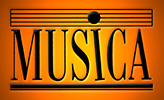The Star-Spangled Banner

The Star-Spangled Banner |  |


Francis Scott Key, 1814, German, from around the Civil War
| O say can you see, By the dawn's early light, What so proudly we hail'd At the twilight's last gleaming? Whose broad stripes and bright stars, Thro' the perilous fight, O'er the ramparts we watch'd, Were so gallantly gleaming? And the rocket's red glare, The bombs bursting in air Gave proof thro' the night That our flag was still there. O say, does that star-spangled Banner yet wave O'er the land of the free And the home of the brave.
2. On the shore dimly seen | 3. And where is the band Who so vauntingly swore, 'Mid the havoc of war And the battles confusion, A home and a country They'd leave us no more? Their blood has wash'd out Their foul footstep's pollution. No refuge could save The hireling and slave From the terror of flight Or the gloom of the grave; And the star-spangled banner In triumph doth wave O'er the land of the free And the home of the brave.
4. O thus be it ever, |
| p class="colonne">The Star-Spangled Banner was certified as the national anthem of the United States of America, by act of Congress on 3. March 1931, although already adopted as such by the Army and Navy.
The text was written by the American lawyer and poet Francis Scott Key (1779-1843), on board a British frigate during the British bombardment of Fort McHenry in Baltimore, Maryland Harbor. On September 13-14, 1814, during the War of 1812, the fort successfully withstood a 25-hour bombardment by the British fleet under Vice-Admiral Alexander Cochrane. |
Key had boarded the ship under a flag of truce to arrange for the release of Dr. William Beanes, a prisoner held by the British during the War of 1812 and had been temporarily detained during the attack. The sight of the 1,260 sq. ft. flag still flying on the following morning inspired Key to write the poem.
Some sources state that the subject matter of the tune, to which he'd written a previous poem in 1805 to honor Commodore Stephen Decatur, equally inspired Mr. Key's life. First printed in a handbill and then in a Baltimore newspaper, it soon became a popular song, sung to the tune of the drinking song "To Anacreon in Heaven". The composer of this tune is uncertain. John Stafford Smith, born in 1750, used the tune for an arrangement and is often regarded as the composer of the tune. |

